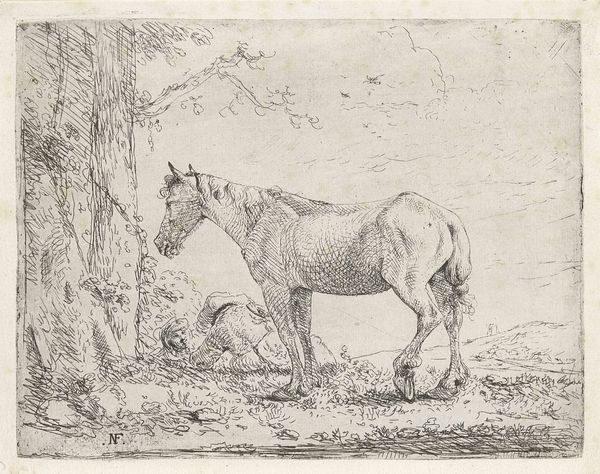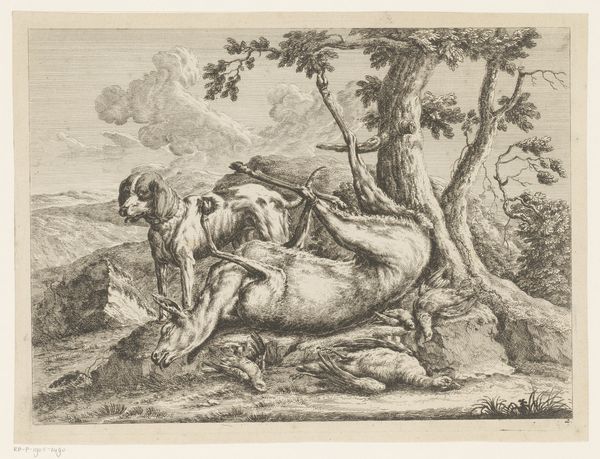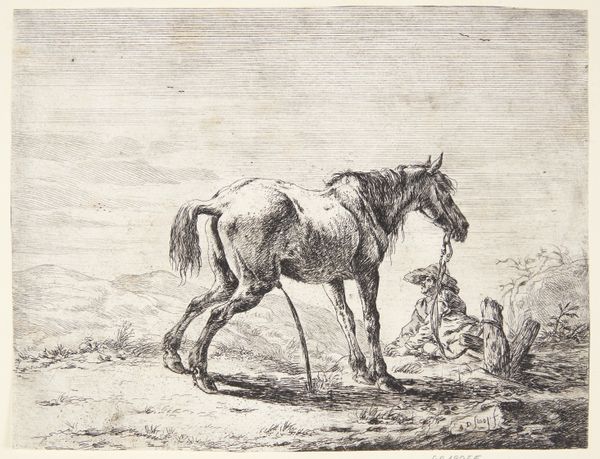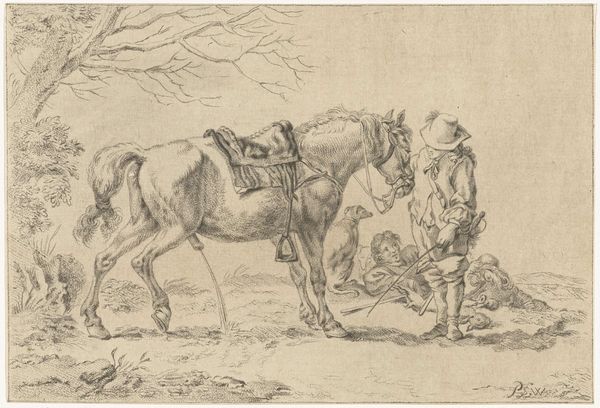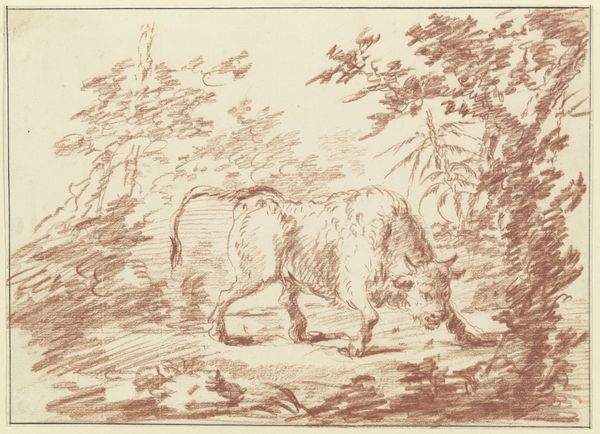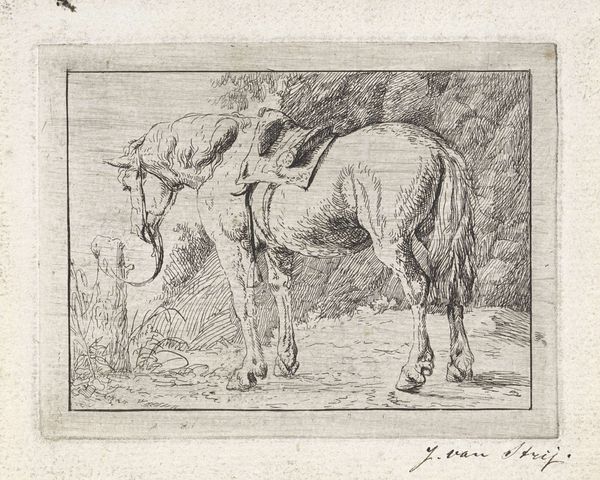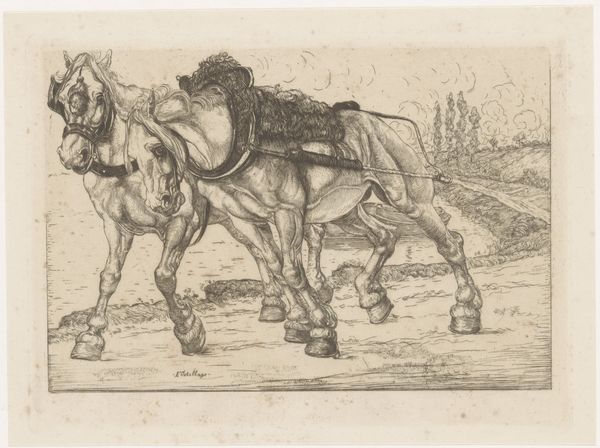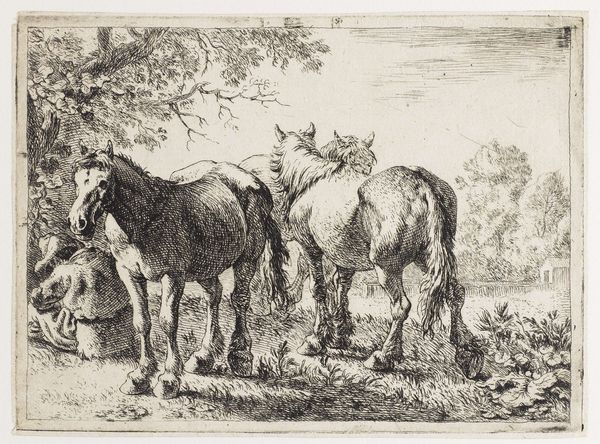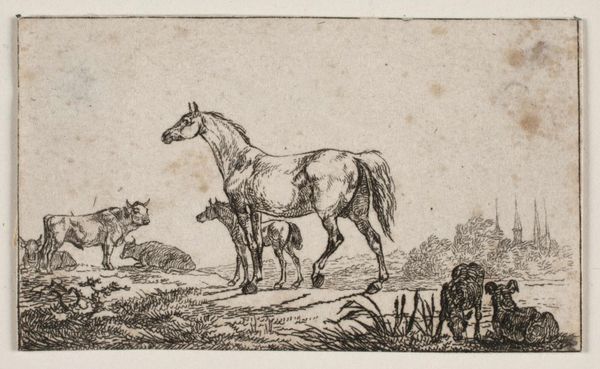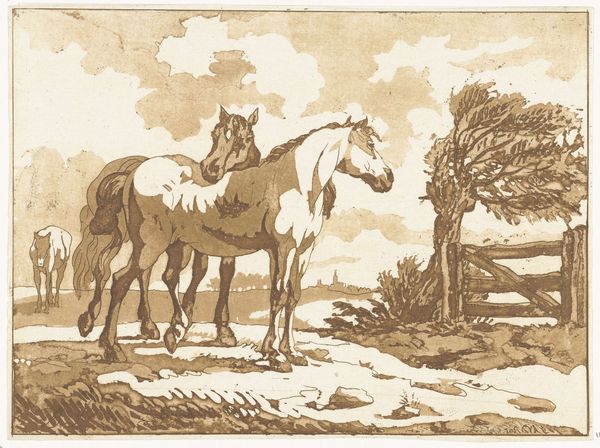
drawing, print, pencil
#
drawing
# print
#
landscape
#
figuration
#
pencil drawing
#
romanticism
#
pencil
Copyright: National Gallery of Art: CC0 1.0
Editor: So, this is “Wild Horses” by Henry Bernard Chalon, a pencil drawing from 1804. There's a real sense of freedom and energy in the sketch, the horses seem untamed, almost vibrating. What stands out to you as you look at this drawing? Curator: The power of the horse, its historical weight as a symbol of nobility, of freedom… notice how Chalon captures not just the animal form, but its spirit? Consider the landscape too - trees, barely sketched buildings in the background. What kind of symbolic resonance do you think he's aiming for by placing these animals here in nature? Editor: I guess the setting adds to the idea of wildness, as opposed to domesticated horses in a farm setting? Curator: Precisely! And if we look beyond the surface, consider the period, 1804. Napoleon was at his height, equestrian portraits were all the rage, usually portraying military leaders. So, what might it signify when an artist depicts horses entirely *without* riders? Editor: It could be about stripping away the association of power and control, revealing the animal’s true essence. Curator: An excellent observation. Furthermore, the very *lack* of detail encourages our imagination to fill in the blanks. The image then almost serves as a kind of Rorschach test, with each viewer projecting their own understanding of 'freedom' and 'wildness' onto these beautiful creatures. What emotions does it stir in you? Editor: Mostly a sense of longing and freedom, which I guess fits in well with the whole Romanticism idea. I didn't think about how deliberately the artist composed this. Curator: Visual symbols, especially when rendered with such apparent ease, often carry far more cultural weight than we initially assume. The beauty of art lies in this layering of meaning and our continuous interpretation across time.
Comments
No comments
Be the first to comment and join the conversation on the ultimate creative platform.

